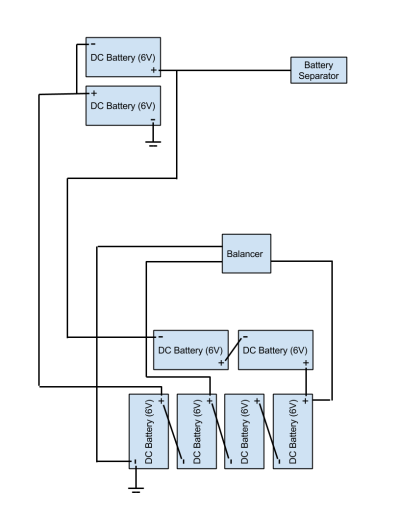It is an interesting question to be sure, with the multiple inputs and tapped out different output voltages.
I had made this sketch off of an etrek sketch of their wiring a while ago, and they are very similar.
It may be as simple as tying together the two grounds from the 24v strings and putting the shunt there. That is what you would do for a 24v system. The problem comes in that the Trimetric shunt measures current, and I don't think it will know the difference between 12 and 24 volt current, so 12v use would show the same loss of ah as 24v would.
The way around it may be to take the ground for the balancer and make sure it stays on the chassis, not moved to the battery side of the shunt, as it would be if you just did the two main grounds. Hopefully, with the ground for the balancer on the chassis, the balancer would be running the shunt backwards as the balancer replaced the power used from just the 12v section. Theoretically, if the balancer did nothing on a 12v discharge, all the power would come from the 12v section so they would go down X amount and that is what the meter would see in ah, then the balancer would replace 1/2X into the 12v section from the other batteries, dropping them 1/2X so they were even. The meter would run forwards 1X and backwards for 1/2X so it would end up at the correct 1/2X down on all batteries.
In reality, the balancer is going to be feeding the 12v section as it is actually discharging, but you should get the same results, as the balancer current bypasses the shunt so it wouldn't see it. If the load is small enough that the balancer can keep up, you would have an accurate reading as it discharged, if it was not large enough, your ah down wouldn't be accurate until the balancer caught up.




